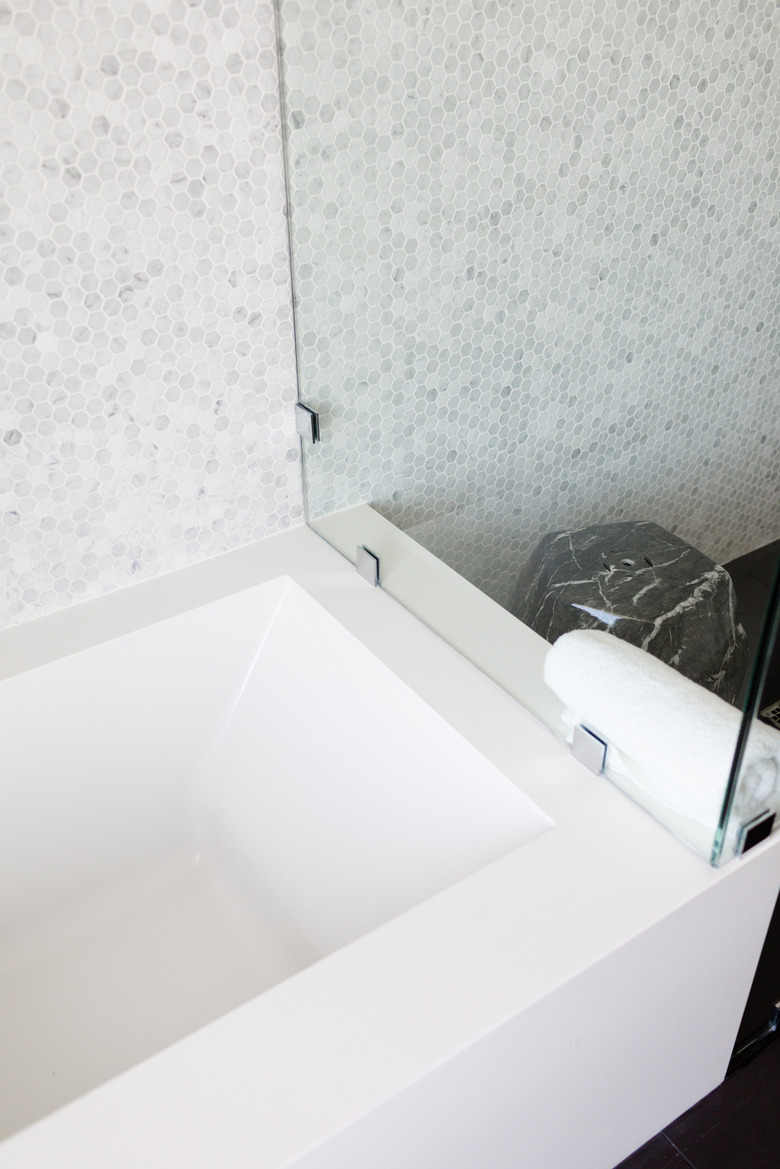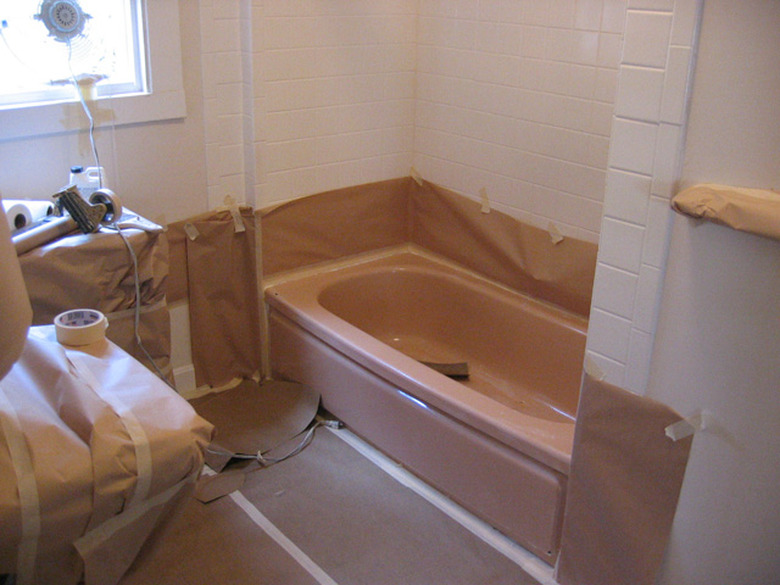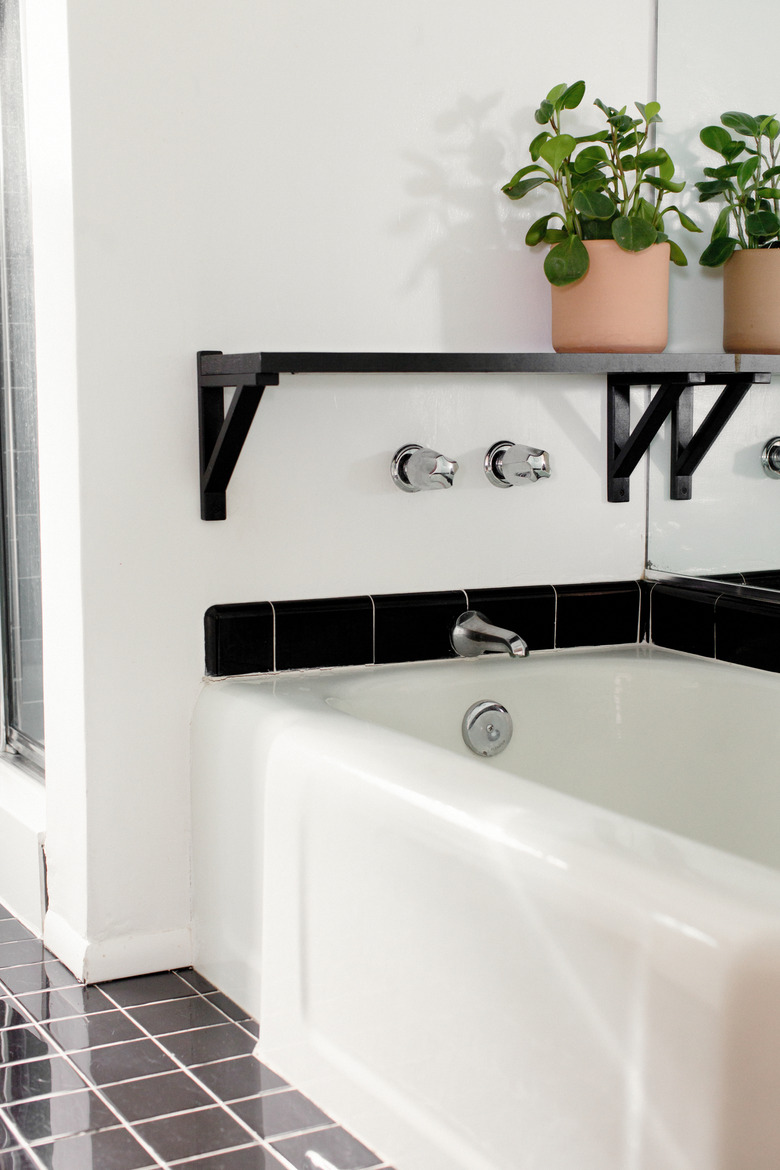Refinishing A Bathtub Or Shower
A number of industries have sprung up to make old worn-out looking bathtubs, tub surrounds and showers look like new. That's because removing an old tub or a standalone shower is a major undertaking and often a big remodeling headache. Tubs are usually hemmed in by two or three walls, and the raised edge of the tub is installed behind the wall finish material. Getting the tub out means removing part, or all, of the walls. Labor cost for removing and installing a new tub can easily outpace the cost of the tub itself, even a high-end jetted model.
The solution is to keep the tub or shower in place and give them a second life by using one of the popular refinishing processes: reglazing or tub liners.
Reglazing
Reglazing
In the reglazing process, a contractor spray-applies a new finish to the tub. The process also works on tiles on tub surround walls and showers. As with most coating applications, most of the difficult work is in the preparations stage.
The chemicals used in the process are caustic, and the contractor should provide adequate ventilation during the job. The tub surface is first cleaned and repaired, and anything that is not going to be reglazed is masked, including the tub and shower fixtures, and the drain. The tub is then treated with an acid that etches the surface to aid in the adhesion of the final coating. Tile walls get much the same treatment, although the installer will regrout if necessary.
Once the prep work is complete, the contractor sprays on a primer and follows this with multiple coats of the polyurethane-based finish. All of the seams are caulked, and after about 24 to 48 hours of curing time, the tub is ready to use. Reglazers usually offer five-year warranties on their work.
Reglazing a tub costs about $450, on average, but there are a number of things that can increase the cost. They include:
- Repairs
- Custom colors. A variety of colors and looks, such as ceramic tile and natural stone, are available.
- Plumbing costs if you decide to change the fixtures. For example, to go from a two-handle to a single-handle fixture, part of the wall will have to be removed to change the plumbing.
While tiles on the tub and shower can be reglazed, many reglazing companies offer the option of covering over the tile walls with acrylic panels.
The DIY Option
The DIY Option
Products for DIY reglazing projects are available at home centers, paint stores and hardware stores. For about $100, you can find kits that contain the materials for preparing the tub, primers and finish coats. The kits do not contain some of the other things you will need, such as masking tape, tools to remove caulk that is around the tub, or the caulk you will apply at the end of the job. The color selection is limited on DIY reglazing products.
The process is not difficult, but it does require attention to detail, especially during the prep stages. The process starts by repairing any chips or nicks on the surface of the tub with automotive body filler. The tub or shower will need to be scraped and sanded, and all of the dust must be removed. The goal is to have a perfectly glaze-free and clean surface before applying the finish.
Wear rubber gloves, which come with some kits, and make sure the room is ventilated. The primer and finish coats are rolled on. The coatings can be used on tile walls as well, but they won't repair crumbling or missing grout.
Tub and Shower Liners
Tub and Shower Liners
In this process, a custom-made acrylic shell is produced to cover your tub or shower. Most tub liner installers own (or are affiliated with) a franchise of one of the liner manufacturers. The installer will come to your home to measure and photograph the tub or shower. With that information, the liner manufacturer takes a sample of your model that he has in stock and uses it to produce a mold that will fit over your existing tub. This process can take four to eight weeks, depending on shipping distances.
Once the liner is on-site, installation takes about one day. The installer disconnects the plumbing and drain lines, makes last-minute adjustments for fit, and then attaches the new liner to the old tub. He reconnects the plumbing and drain, seals the seams with caulk, and the tub or shower is ready for use. It is important to hire an experienced installer because any water that makes its way between the liner and the old tub can lead to mold.
A tub or shower liner will cost about $500 to $1,400, but many people opt to have the tub surround walls covered also. This can increase the cost to as high as $4,000. Wall panels come in a variety of looks, including marble and ceramic tile. The panels can include built-ins and shelves for holding bath and shower items.
If you are planning a total bathroom remodel that includes removing wall finishes, it makes sense to consider a new tub or shower, especially if you want to upgrade to a high-end model. But if you only want to refresh the room, there are viable options to ripping out and installing a new tub.


